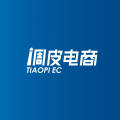What are the KPI performance appraisal indicators for the operations director?
1、公司年度利润任务完成率率。
2、公司年度销售任务完成率。
3、订单及时交付率。
4、客户满意度。
5、技术创新(关键重大技术的突破)目标达成率。
6、直接下属绩效业绩优秀率。
1、KPI绩效考核,又称“关键业绩指标”考核法,是企业绩效考核的方法之一。这种方法的优点是标准比较鲜明,易于做出评估。它的缺点是对简单的工作制定标准难度较大,缺乏一定的定量性。
2、企业的生产过程是劳动者运用劳动工具改变劳动对象的过程。在企业生产的三个基本要素(劳动力、劳动资料、劳动对象)中,劳动力是最重要的因素,正确的统计、分析、预测劳动生产力指标,对于企业有序地组织生产、充分开发、合理利用人力资源有着重要意义。
3、这种方法的优点是标准比较鲜明,易于做出评估。它的缺点是对简单的工作制定标准难度较大;缺乏一定的定量性;绩效指标只是一些关键的指标,对于其他内容缺少一定的评估,应当适当的注意。
4、KPI法符合一个重要的管理原理--“二八原理”。在一个企业的价值创造过程中,存在着“20/80”的规律,即20%的骨干人员创造企业80%的价值;而且在每一位员工身上“二八原理”同样适用,即 80%的工作任务是由20%的关键行为完成的。因此,必须抓住20%的关键行为,对之进行分析和衡量,这样就能抓住业绩评价的重心。
Professional answer
1. The company's annual profit task completion rate.
2. The company's annual sales task completion rate.
3. Order timely delivery rate.
4. Customer satisfaction.
5. Technological innovation (key major technological breakthrough) target achievement rate.
6. Direct subordinates' performance excellence rate.
1. KPI performance appraisal, also known as the "key performance indicator" appraisal method, is one of the methods of corporate performance appraisal. The advantage of this method is that the standards are relatively clear and easy to evaluate. Its disadvantage is that it is difficult to set standards for simple work and lacks certain quantification.
2. The production process of an enterprise is the process in which workers use labor tools to change the objects of labor. Among the three basic elements of enterprise production (labor, labor materials, and labor objects), labor is the most important factor. Correct statistics, analysis, and prediction of labor productivity indicators are of great significance for enterprises to organize production in an orderly manner, fully develop, and rationally utilize human resources.
3. The advantage of this method is that the standards are relatively clear and easy to evaluate. Its disadvantages are that it is difficult to set standards for simple work; it lacks certain quantification; performance indicators are only some key indicators, and there is a lack of certain evaluation for other content, so proper attention should be paid.
4. The KPI method conforms to an important management principle-the "80/20 principle". In the value creation process of an enterprise, there is a "20/80" rule, that is, 20% of the backbone personnel create 80% of the value of the enterprise; and the "80/20 principle" also applies to every employee, that is, 80% of the work tasks are completed by 20% of the key behaviors. Therefore, it is necessary to grasp the 20% of key behaviors, analyze and measure them, so that the focus of performance evaluation can be grasped.
Similar Q&A
recommend What is the difference between JD Rising Star Program and New Star Program?
E-c News Continuously pushing e-commerce knowledge to you








Latest Q&A More
-
Do I need a trademark to open a franchise store on Pinduoduo to sell books?
#Pinduoduo#
-
How to withdraw from a Pinduoduo store
#Pinduoduo#
-
How to withdraw from Pinduoduo merchants
#Pinduoduo#
-
How to pay fees when closing a Pinduoduo store
#Pinduoduo#
-
How to withdraw from Pinduoduo
#Pinduoduo#
-
Which store on Pinduoduo is authentic?
#Pinduoduo#
-
Which stores on Pinduoduo can buy genuine products?
#Pinduoduo#
-
How to check the store under Pinduoduo
#Pinduoduo#
-
How to receive Pinduoduo online game products
#Pinduoduo#
-
How to sell the electronic version on Pinduoduo
#Pinduoduo#
E-c News 2025-12-21 14:24:37

- African netizens use China Africa cross-border e-commerce platform for online shopping
- how is the new seller of cross-border e-commerce doing?
- how can cross-border e-commerce Amazon sell on Amazon platform without goods?
- Amazon store opening process and cost analysis!
- Amazon plans to expand its pharmacy business on a large scale and will add same day delivery service
